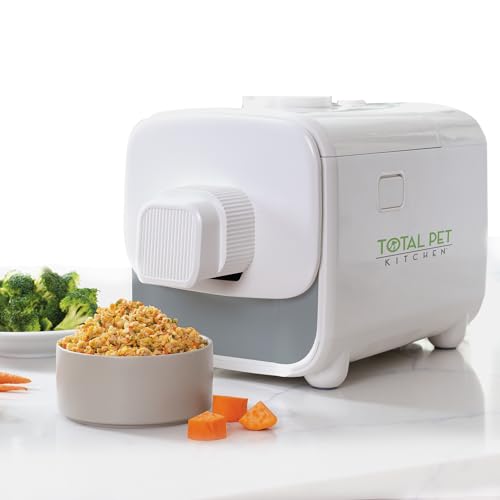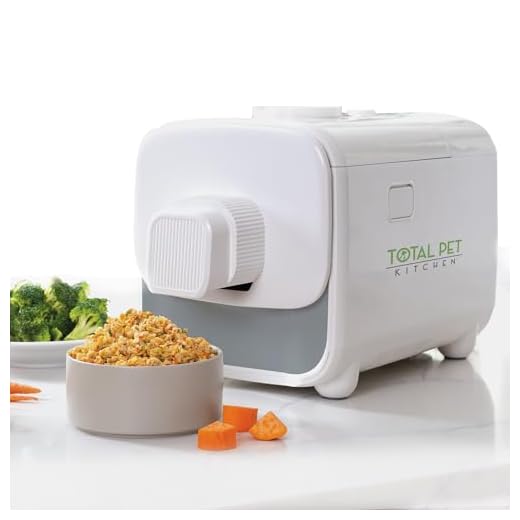



Start by introducing the new meals gradually. Mix a small amount of the moist variety into the regular kibble, increasing the ratio over several days. This helps your palate adjust without overwhelming your senses.
Monitor your reaction closely. Look for signs of acceptance or aversion. If I sniff and walk away, it may be time to reduce the new portion or try a different flavor. Persistence is key; not all flavors will tickle my taste buds right away.
Stay hydrated. Along with the new texture, ensure that fresh water is always available. Hydration is just as important as what lands in the bowl. Consider adding a splash of low-sodium broth to enhance the aroma and appeal of meals.
Consistency is vital. Aim for regular feeding times and stick to the same place for meals. This routine helps create a sense of security and anticipation. It’s not just about what I eat; it’s about the experience surrounding mealtime.
Lastly, celebrate small victories. If I take a few bites of the new meal, acknowledge it with a gentle pet or some affection. Positive reinforcement encourages me to keep exploring new tastes.
Guidelines for Shifting to Moist Nourishment
Begin by mixing a small portion of the new nourishment with the current one. A good ratio is 25% of the new item to 75% of the usual. Gradually increase the amount of the moist variety over 7 to 10 days, adjusting based on your response. Monitor your appetite; if I show reluctance, slow down the process.
Texture and Temperature
Consider the texture and warmth of the new nourishment. Slightly warming the moist mixture can enhance its aroma, making it more enticing. Experiment with different consistencies; some felines prefer a chunkier texture while others might enjoy a smoother blend.
Flavor Variety
Introduce various flavors to identify what excites my palate. A mix of poultry, seafood, and beef can keep things interesting. Always ensure any new flavors are introduced one at a time to avoid digestive disturbances. Finally, keep an eye on hydration; moist options can help with water intake, but fresh water should always be available.
Understanding the Benefits of Wet Food for Cats
Hydration is a key advantage of moist meals. The higher water content helps keep my body well-hydrated, reducing the risk of urinary and kidney issues. Staying hydrated is crucial for maintaining my energy levels and overall health.
Another benefit is the palatability. The rich aroma and texture of these meals make them more appealing than their crunchy counterparts. I find myself eagerly anticipating mealtime, which can also aid in stimulating my appetite, especially if I’m feeling a bit under the weather.
Digestive Health
This type of nourishment is often easier on the stomach. The softer texture promotes better digestion and can help prevent issues like hairballs. For someone like me, who enjoys grooming, this is a significant plus. Additionally, the inclusion of quality proteins and fewer carbohydrates supports a balanced diet, which is vital for maintaining a healthy weight.
Variety and Nutritional Diversity
Moist meals come in various flavors and formulations, allowing for a more varied diet. This diversity ensures that I receive different nutrients that support my health. It’s essential to explore different options to find what I enjoy while ensuring that my nutritional needs are met. Always check the labels for quality ingredients to make informed choices.
In conclusion, the shift to moist meals offers numerous benefits, including improved hydration, enhanced palatability, better digestive health, and nutritional diversity. These factors contribute to my overall well-being and happiness. Trust me, it’s worth considering!
Assessing Your Current Diet and Preferences
Take a close look at what I’m currently munching on. Observing my eating habits reveals valuable insights into my preferences. If I consistently leave kibble in my bowl, it might indicate I’m not thrilled about it. Instead, if I eagerly devour any canned option, that’s a strong sign of my preference.
Analyzing Ingredients and Nutritional Needs
Check the ingredients on the packaging. High-quality proteins should be at the top of the list. If the current meals lack meat or contain fillers, it’s time to rethink my options. A diet rich in moisture and essential nutrients will enhance my overall health. Knowledge about protein digestion can be found here.
Monitoring Reactions to New Options
When introducing new meals, observe my reactions. Sudden changes can lead to digestive upset, so gradual introduction is key. Try mixing a small amount of new choices with my usual fare. If I seem enthusiastic about the new taste, that’s a green light for more experimentation.
Choosing the Right Wet Food for Your Feline’s Needs
Opt for options that list real meat as the primary ingredient. Check for specific protein sources like chicken, beef, or fish. Avoid products with vague terms like “meat by-products” since they can include lower-quality ingredients.
Consider Nutritional Content
Examine the guaranteed analysis on the label. Look for a minimum of 8-10% protein and low carbohydrates. Ingredients like taurine, omega fatty acids, and essential vitamins are beneficial for overall health. Select recipes designed for your age group to ensure appropriate nutrition.
Flavor Variety and Texture
Explore different flavors and textures. Some prefer pâté while others enjoy chunks in gravy or broth. Experiment with various options to determine what excites your taste buds. If you discover a favorite, stock up on those to keep meals enjoyable.
Monitoring Your Cat’s Response During the Transition
Observe my behavior closely during the shift to a new diet. Pay attention to my eating habits, including how much I consume and how often I return to my bowl. If I seem hesitant or refuse to eat, it might indicate discomfort with the new texture or flavor.
Watch for any signs of digestive issues, such as vomiting or diarrhea. A gradual approach is key; if I show any negative reactions, slow down the introduction of the new meals. Mixing a small portion of the new item with my usual meal can ease the process.
Track my weight regularly. Any significant changes, whether weight loss or gain, should prompt a reevaluation of the transition strategy. It’s important to ensure that I maintain a healthy weight as I adapt to the new nutrition.
Assess my overall energy levels and mood. If I seem lethargic or irritable, it could be a sign that the new diet isn’t meeting my needs. Engaging playtime can help gauge if I’m feeling my best.
Consider keeping a journal of my reactions to the change. Documenting my progress will help identify patterns and make it easier to adjust the plan accordingly. If you have any concerns, consult with a veterinarian for tailored advice.
For those who are considering outdoor safety while I explore, check out this article on invisible fence for cats for tips on keeping me secure.
Adjusting Feeding Practices for Optimal Acceptance
Begin with gradual integration. Introduce new meals in small portions alongside the existing kibble. This method encourages exploration without overwhelming taste buds.
Establish a consistent feeding schedule. Set specific times for meals to create a sense of routine. This helps me anticipate when my next treat is coming, making me more receptive to trying new options.
Utilize warming techniques. Slightly heating the new offerings can enhance aroma, enticing me to sample the unfamiliar. Just a few seconds in the microwave can make a significant difference.
Experiment with various textures. Some prefer pâté, while others enjoy chunks in gravy. Observing my reactions will guide you in selecting the most appealing format.
Incorporate toppings or mix-ins. A sprinkle of my favorite treats or a dash of broth can make new meals more enticing. This little addition can encourage me to dive into the new flavors.
Monitor portion sizes. Offering smaller amounts at first can prevent waste and make it easier for me to adapt. If I finish quickly, you can gradually increase the portion size.
Stay patient and observant. Each feline has unique preferences, and it may take time to find the right combination. Celebrate small victories, like when I take a few licks or show interest in the new dish.
Lastly, maintain a calm environment during mealtimes. Reducing distractions will help me focus on the new options presented. Creating a peaceful atmosphere can lead to a more positive dining experience.










